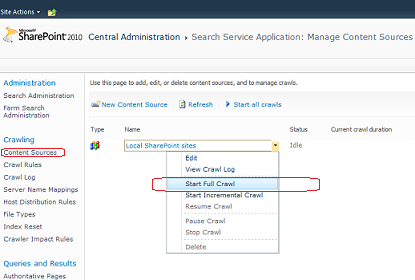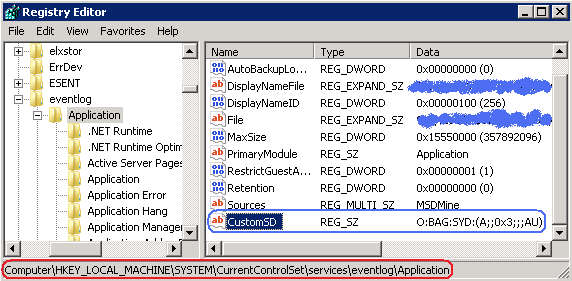using System;
using System.Collections;
using System.Text;
using System.Globalization;
using System.IO;
using System.Web.UI;
namespace Helpers
{
public static class SecondaryFieldNamesHelper
{
#region fields & properties
private static string[] s_crgstrUrlHexValue = new string[]
{
"%00", "%01", "%02", "%03", "%04", "%05", "%06", "%07", "%08", "%09", "%0A", "%0B", "%0C", "%0D", "%0E", "%0F",
"%10", "%11", "%12", "%13", "%14", "%15", "%16", "%17", "%18", "%19", "%1A", "%1B", "%1C", "%1D", "%1E", "%1F",
"%20", "%21", "%22", "%23", "%24", "%25", "%26", "%27", "%28", "%29", "%2A", "%2B", "%2C", "%2D", "%2E", "%2F",
"%30", "%31", "%32", "%33", "%34", "%35", "%36", "%37", "%38", "%39", "%3A", "%3B", "%3C", "%3D", "%3E", "%3F",
"%40", "%41", "%42", "%43", "%44", "%45", "%46", "%47", "%48", "%49", "%4A", "%4B", "%4C", "%4D", "%4E", "%4F",
"%50", "%51", "%52", "%53", "%54", "%55", "%56", "%57", "%58", "%59", "%5A", "%5B", "%5C", "%5D", "%5E", "%5F",
"%60", "%61", "%62", "%63", "%64", "%65", "%66", "%67", "%68", "%69", "%6A", "%6B", "%6C", "%6D", "%6E", "%6F",
"%70", "%71", "%72", "%73", "%74", "%75", "%76", "%77", "%78", "%79", "%7A", "%7B", "%7C", "%7D", "%7E", "%7F",
"%80", "%81", "%82", "%83", "%84", "%85", "%86", "%87", "%88", "%89", "%8A", "%8B", "%8C", "%8D", "%8E", "%8F",
"%90", "%91", "%92", "%93", "%94", "%95", "%96", "%97", "%98", "%99", "%9A", "%9B", "%9C", "%9D", "%9E", "%9F",
"%A0", "%A1", "%A2", "%A3", "%A4", "%A5", "%A6", "%A7", "%A8", "%A9", "%AA", "%AB", "%AC", "%AD", "%AE", "%AF",
"%B0", "%B1", "%B2", "%B3", "%B4", "%B5", "%B6", "%B7", "%B8", "%B9", "%BA", "%BB", "%BC", "%BD", "%BE", "%BF",
"%C0", "%C1", "%C2", "%C3", "%C4", "%C5", "%C6", "%C7", "%C8", "%C9", "%CA", "%CB", "%CC", "%CD", "%CE", "%CF",
"%D0", "%D1", "%D2", "%D3", "%D4", "%D5", "%D6", "%D7", "%D8", "%D9", "%DA", "%DB", "%DC", "%DD", "%DE", "%DF",
"%E0", "%E1", "%E2", "%E3", "%E4", "%E5", "%E6", "%E7", "%E8", "%E9", "%EA", "%EB", "%EC", "%ED", "%EE", "%EF",
"%F0", "%F1", "%F2", "%F3", "%F4", "%F5", "%F6", "%F7", "%F8", "%F9", "%FA", "%FB", "%FC", "%FD", "%FE", "%FF"
};
#endregion
#region public methods
public static bool IsEncodedString(string str)
{
if (string.IsNullOrEmpty(str))
return false;
bool res = true;
try
{
string[] splittedString = SplitStrings(str);
}
catch
{
res = false;
}
return res;
}
public static string Encode(string[] secondaryFieldNames)
{
return CombineStrings(secondaryFieldNames);
}
public static string[] Decode(string str)
{
if(string.IsNullOrEmpty(str))
return new string[0];
return SplitStrings(str);
}
public static string ConvertToSP2010(string str)
{
if (IsEncodedString(str))
return str;
string[] fieldNames = str.Split(new string[] { ":" }, StringSplitOptions.RemoveEmptyEntries);
string encodedVal = CombineStrings(fieldNames);
return encodedVal;
}
#endregion
#region internal methods
private static string[] SplitStrings(string combinedEncoded)
{
string[] array = null;
ArrayList list = new ArrayList();
if ("0" == combinedEncoded)
return new string[0];
try
{
string str = UrlKeyValueDecode(combinedEncoded);
string[] strArray2 = str.Split(new char[] { ' ' }, StringSplitOptions.None);
int result = 0;
if ((strArray2 == null) || !int.TryParse(strArray2[strArray2.Length - 1], NumberStyles.Integer,
CultureInfo.InvariantCulture, out result))
throw new ArgumentException(string.Empty, "combinedEncoded");
int num2 = str.LastIndexOf(' ');
string str2 = str.Substring(result, num2 - result);
int length = str2.Length;
int index = 0;
int startIndex = 0;
while (startIndex < length)
{
string s = strArray2[index];
int num6 = 1;
if ((s != null) && (s.Length == 0))
list.Add(null);
else
{
if (!int.TryParse(s, NumberStyles.Integer, CultureInfo.InvariantCulture, out num6))
throw new ArgumentException(string.Empty, "combinedEncoded");
list.Add(str2.Substring(startIndex, num6 - 1));
}
startIndex += num6;
index++;
}
array = new string[list.Count];
list.CopyTo(array);
}
catch (Exception exception)
{
throw new ArgumentException(string.Empty, "combinedEncoded", exception);
}
return array;
}
private static string UrlKeyValueDecode(string keyOrValueToDecode)
{
if (string.IsNullOrEmpty(keyOrValueToDecode))
return keyOrValueToDecode;
return UrlDecodeHelper(keyOrValueToDecode, keyOrValueToDecode.Length, true);
}
private static string UrlDecodeHelper(string stringToDecode, int length, bool decodePlus)
{
if ((stringToDecode == null) || (stringToDecode.Length == 0))
return stringToDecode;
StringBuilder builder = new StringBuilder(length);
byte[] bytes = null;
int nIndex = 0;
while (nIndex < length)
{
char ch = stringToDecode[nIndex];
if (ch < ' ')
nIndex++;
else
{
if (decodePlus && (ch == '+'))
{
builder.Append(" ");
nIndex++;
continue;
}
if (IsHexEscapedChar(stringToDecode, nIndex, length))
{
if (bytes == null)
bytes = new byte[(length - nIndex) / 3];
int count = 0;
do
{
int num3 = (FromHexNoCheck(stringToDecode[nIndex + 1]) * 0x10) + FromHexNoCheck(stringToDecode[nIndex +
2]);
bytes[count++] = (byte)num3;
nIndex += 3;
}
while (IsHexEscapedChar(stringToDecode, nIndex, length));
builder.Append(Encoding.UTF8.GetChars(bytes, 0, count));
continue;
}
builder.Append(ch);
nIndex++;
}
}
if (length < stringToDecode.Length)
builder.Append(stringToDecode.Substring(length));
return builder.ToString();
}
private static bool IsHexEscapedChar(string str, int nIndex, int nPathLength)
{
if ((((nIndex + 2) >= nPathLength) || (str[nIndex] != '%')) || (!IsHexDigit(str[nIndex + 1]) || !IsHexDigit(str[nIndex +
2])))
return false;
if (str[nIndex + 1] == '0')
return (str[nIndex + 2] != '0');
return true;
}
private static bool IsHexDigit(char digit)
{
if ((('0' > digit) || (digit > '9')) && (('a' > digit) || (digit > 'f')))
return (('A' <= digit) && (digit <= 'F'));
return true;
}
private static int FromHexNoCheck(char digit)
{
if (digit <= '9')
return (digit - '0');
if (digit <= 'F')
return ((digit - 'A') + 10);
return ((digit - 'a') + 10);
}
private static string CombineStrings(string[] strings)
{
StringBuilder builder = new StringBuilder();
int index = 0;
for (int i = 0; i < strings.Length; i++)
{
string str = strings[i];
string str2 = ((str != null) ? ((str.Length + 1)).ToString(CultureInfo.InvariantCulture) : string.Empty) + ' ';
builder.Insert(index, str2);
index += str2.Length;
builder.Append(str + ' ');
}
builder.Append(index.ToString(CultureInfo.InvariantCulture));
return UrlKeyValueEncode(builder.ToString());
}
private static string UrlKeyValueEncode(string keyOrValueToEncode)
{
if ((keyOrValueToEncode == null) || (keyOrValueToEncode.Length == 0))
return keyOrValueToEncode;
StringBuilder sb = new StringBuilder(0xff);
HtmlTextWriter output = new HtmlTextWriter(new StringWriter(sb, CultureInfo.InvariantCulture));
UrlKeyValueEncode(keyOrValueToEncode, output);
return sb.ToString();
}
private static void UrlKeyValueEncode(string keyOrValueToEncode, TextWriter output)
{
if (((keyOrValueToEncode != null) && (keyOrValueToEncode.Length != 0)) && (output != null))
{
bool fUsedNextChar = false;
int startIndex = 0;
int length = 0;
int num3 = keyOrValueToEncode.Length;
for (int i = 0; i < num3; i++)
{
char ch = keyOrValueToEncode[i];
if (((('0' <= ch) && (ch <= '9')) || (('a' <= ch) && (ch <= 'z'))) || (('A' <= ch) && (ch <= 'Z')))
length++;
else
{
if (length > 0)
{
output.Write(keyOrValueToEncode.Substring(startIndex, length));
length = 0;
}
UrlEncodeUnicodeChar(output, keyOrValueToEncode[i], (i < (num3 - 1)) ? keyOrValueToEncode[i + 1] : '\0', out
fUsedNextChar);
if (fUsedNextChar)
i++;
startIndex = i + 1;
}
}
if ((startIndex < num3) && (output != null))
output.Write(keyOrValueToEncode.Substring(startIndex));
}
}
private static void UrlEncodeUnicodeChar(TextWriter output, char ch, char chNext, out bool fUsedNextChar)
{
bool fInvalidUnicode = false;
UrlEncodeUnicodeChar(output, ch, chNext, ref fInvalidUnicode, out fUsedNextChar);
}
private static void UrlEncodeUnicodeChar(TextWriter output, char ch, char chNext, ref bool fInvalidUnicode, out bool
fUsedNextChar)
{
int num = 0xc0;
int num2 = 0xe0;
int num3 = 240;
int num4 = 0x80;
int num5 = 0xd800;
int num6 = 0xfc00;
int num7 = 0x10000;
fUsedNextChar = false;
int index = ch;
if (index <= 0x7f)
output.Write(s_crgstrUrlHexValue[index]);
else
{
int num8;
if (index <= 0x7ff)
{
num8 = num | (index >> 6);
output.Write(s_crgstrUrlHexValue[num8]);
num8 = num4 | (index & 0x3f);
output.Write(s_crgstrUrlHexValue[num8]);
}
else if ((index & num6) != num5)
{
num8 = num2 | (index >> 12);
output.Write(s_crgstrUrlHexValue[num8]);
num8 = num4 | ((index & 0xfc0) >> 6);
output.Write(s_crgstrUrlHexValue[num8]);
num8 = num4 | (index & 0x3f);
output.Write(s_crgstrUrlHexValue[num8]);
}
else if (chNext != '\0')
{
index = (index & 0x3ff) << 10;
fUsedNextChar = true;
index |= chNext & 'Ͽ';
index += num7;
num8 = num3 | (index >> 0x12);
output.Write(s_crgstrUrlHexValue[num8]);
num8 = num4 | ((index & 0x3f000) >> 12);
output.Write(s_crgstrUrlHexValue[num8]);
num8 = num4 | ((index & 0xfc0) >> 6);
output.Write(s_crgstrUrlHexValue[num8]);
num8 = num4 | (index & 0x3f);
output.Write(s_crgstrUrlHexValue[num8]);
}
else
fInvalidUnicode = true;
}
}
#endregion
}
}




